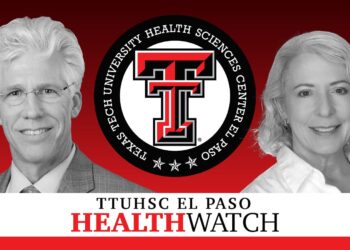Adding nivolumab (Opdivo) instead of brentuximab vedotin (Adcetris) to the standard chemotherapy backbone of doxorubicin (Adriamycin), vinblastine, and dacarbazine (AVD) resulted in longer progression-free survival (PFS) in adolescents and adults with advanced-stage classic Hodgkin’s lymphoma, longer follow-up of the SWOG S1826 trial showed.
Among 970 patients in the intention-to-treat population, the 2-year PFS rates were 92% with the nivolumab regimen compared with 83% with the brentuximab vedotin regimen (HR 0.45, 95% CI 0.30-0.65), reported Jonathan W. Friedberg, MD, of the University of Rochester Wilmot Cancer Institute in New York, and colleagues in the New England Journal of Medicine (NEJM).
The nivolumab regimen also had a better side-effect profile, with fewer patients stopping treatment early and a low incidence of immune-related toxicities. Two-year event-free survival rates were 90% with nivolumab and 81% with brentuximab vedotin (HR 0.50, 95% CI 0.36-0.71), and 2-year overall survival rates were not significantly different but favored the nivolumab arm, at 99% and 98%, respectively (HR 0.39, 95% CI 0.15-1.03).
At the prespecified second interim analysis at a median follow-up of 12.1 months, which was presented last year at the American Society of Clinical Oncology annual meeting, the efficacy threshold was crossed, with nivolumab plus AVD significantly improving PFS compared with brentuximab vedotin plus AVD (HR 0.48, 99% CI 0.27-0.87, P=0.001).
“Owing to the short follow-up time for the primary analysis, we repeated the analysis after an additional 1 year of follow-up to assess the durability of the progression-free survival benefit,” Friedberg and colleagues explained.
“On the basis of the clinically meaningful improvement in progression-free survival and excellent side-effect profile of [nivolumab plus AVD], the opportunity to avoid potentially toxic consolidative radiation therapy, and the decreased drug-acquisition and supportive-care costs, [this regimen] should be a strong candidate for primary treatment in adolescent and adult patients with stage III or IV Hodgkin’s lymphoma,” they suggested.
In an editorial accompanying the study, James O. Armitage, MD, of the University of Nebraska School of Medicine in Omaha, and Dan L. Longo, MD, of Brigham and Women’s Hospital in Boston, and a deputy editor of NEJM, noted that incorporating brentuximab vedotin into the treatment of advanced-stage classic Hodgkin’s lymphoma has markedly improved outcomes in adult and pediatric patients.
“When the results of treatment [with brentuximab vedotin] are this good, improving on them is a very difficult task,” they wrote, adding that this has led many investigators to assume that the antitumor effects possible with therapy have been maximized.
However, they suggested, SWOG S1826 “undermines that assumption.”
“The nivolumab regimen is easy to deliver, is associated with modest toxic effects, and is highly effective,” they wrote. “This latest trial suggests that [nivolumab plus AVD] may become the treatment of choice for all stages of Hodgkin’s lymphoma.”
SWOG S1826 is a phase III, multicenter, randomized trial involving patients ages 12 years and up with newly diagnosed stage III or IV classic Hodgkin’s lymphoma. Overall, 970 patients were eligible for inclusion in the modified intention-to-treat cohort (483 patients in the brentuximab vedotin plus AVD group and 487 in the nivolumab plus AVD group). This cohort included 236 patients ages 12 to 17; 639 patients ages 18 to 60; and 95 patients older than 60, a group traditionally underrepresented in Hodgkin’s lymphoma trials.
In this study, older patients had 2-year PFS rates of 88% with the nivolumab regimen and 65% with the brentuximab vedotin regimen (HR 0.30, 95% CI 0.12-0.72) — a PFS advantage similar to that seen among patients ages 12 to 17, who had 2-year PFS rates of 95% and 83%, respectively (HR 0.31, 95% CI 0.13-0.74).
“Thus, we consider [nivolumab plus AVD] to be an important new treatment option for fit older patients,” Friedberg and team wrote.
Regarding safety, all treatment was discontinued early in 7.6% of patients in the nivolumab plus AVD group and 12% in the brentuximab vedotin plus AVD group, while 9.4% of patients discontinued nivolumab and 22.2% discontinued brentuximab vedotin.
Less than 1% of patients received end-of-treatment radiotherapy — three patients in the nivolumab regimen group and four patients in the brentuximab vedotin regimen group.
This represented “a dramatic reduction in the use of radiation in adolescent patients as compared with contemporary regimens,” Friedberg and colleagues observed.
With the exception of neutropenia and arthralgia, all adverse events occurred more frequently with brentuximab vedotin plus AVD. High-grade adverse events were also more frequent with the brentuximab vedotin regimen, except neutropenia.
Neutropenia of any grade occurred in 56% of patients in the nivolumab regimen group and 34% of those in the brentuximab vedotin regimen group, while grade 3 or higher neutropenia occurred in 48% and 26%, respectively.
Disclosures
The study was funded by the National Cancer Institute and other sources, including Bristol Myers Squibb.
Friedberg had no disclosures.
Several co-authors reported multiple relationships with industry.
Armitage reported relationships with Cardiff Oncology and Syncromune. Longo is a deputy editor of the New England Journal of Medicine.
Primary Source
New England Journal of Medicine
Source Reference: Herrera AF, et al “Nivolumab+AVD in advanced-stage classic Hodgkin’s lymphoma” N Engl J Med 2024; DOI: 10.1056/NEJMoa2405888.
Secondary Source
New England Journal of Medicine
Source Reference: Armitage JO, Longo DL “Therapy for Hodgkin’s lymphoma — can it get any better?” N Engl J Med 2024; DOI: 10.1056/NEJMe2408724.
Source link : https://www.medpagetoday.com/hematologyoncology/lymphoma/112427
Author :
Publish date : 2024-10-16 21:00:00
Copyright for syndicated content belongs to the linked Source.


![author['full_name']](https://www.newshealth.biz/wp-content/uploads/2024/10/Nivolumab-Regimen-Achieves-Durable-PFS-in-Advanced-Hodgkins-Lymphoma.jpg)












